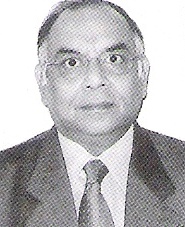 |
District Secretary
Name: Satish Gupta
Mobile: 9811031700
E-mail: gharondha_estates@hotmail.com |
 |
District Director
Name: Sushma Mattu
Mobile: 9810271683
E-mail: smattu@essemhighteeh.com |
 |
District Chairman
Name: Madhuri Parti
Mobile: 9811177888
E-mail: madhuriparti@gmail.com |
 |
Assistant Governor
Name: Ajay Narain
Mobile: 9811033228
E-mail: ajaynw@yahoo.co.in |
The History
Interact, Rotary International's service club program for young adults at the secondary school level, was officially inaugurated on 28 October 1962. The foundation of Interact marked a new approach to youth service for Rotary. For the first time, Rotarians were not just serving youth, but were empowering them to serve in their communities and internationally with their Rotary club sponsors.
Rotary service to youth dates back as early as 1917, when a committee was appointed to study youth service. Two years later, a department dedicated to "Boys' Work" was established and in 1920, the Rotary Club of New York organized Boys' Week, an annual celebration that encouraged patriotism and loyal citizenship in its young participants. The movement caught on as Rotary clubs sponsored Boys' Weeks across the United States and abroad. Thirteen years later, the program was officially renamed Youth Week in order to incorporate girls. Although such activities engaged Rotarians in service to youth, many club members around the world began to feel that something else could be done to actively engage young adults in service to their communities.
One of the earliest predecessors to Interact was known as the Ro Club, a service club for high school students. Ro clubs' goals and projects were very similar to those of today's Interact clubs. Yrator Clubs (Rotary spelled backward) for outstanding high school students also were active as early as 1934. Their efforts focused on community activities but did not incorporate the international element that is required of clubs today. In 1939, Pan-American Clubs for primary and secondary school students were proposed as a way to increase international understanding and goodwill. The clubs' purpose was to educate students throughout the Americas on the customs and cultures of other countries in the Western Hemisphere. However, without the official endorsement of Rotary International, the movement eventually fizzled out.
Throughout the 1940s, Rotarians continued to serve the children and young adults in their communities by sponsoring the efforts of other organizations. Yet, feeling the need to actively engage youth in community service, Rotary clubs around the world soon began forming youth service clubs based on the ideals, principles, and organization of their own clubs. The Rotary Club of Miami, Fla., USA, sponsored the most influential of these movements, known as Wheel clubs. Although Wheel clubs were not adopted as an official Rotary program, the RI Board decided to research the feasibility of creating a youth service organization for adoption by all Rotary clubs.
Before the end of his term in 1960, then-RI President Harold T. Thomas appointed an Ad Hoc Committee on Youth to study the implementation of youth service clubs. The group studied preexisting youth clubs and consulted with Rotarians, educators, teenagers, and sociologists. Committee Chairman Charles H. Taylor of Christchurch, New Zealand, played the greatest role in the creation and approval of the program through his insight, leadership, and extensive research. The program was named Interact, a combination of the words "international" and "action."
On 5 November 1962, within eight days of the official adoption of the Interact program, the first Interact club was chartered at Melbourne High School, Fla., USA. The club's 39 members reflected the universal criteria that all Interactors be male and in the last three years of secondary school. Within one year there were 177 Interact clubs in 24 countries; by October 1964 that number had grown to 450 clubs in 35 countries. Within a few years, Interact began to take on its present form. In 1967, the RI Board opened membership to female members, preceding the admission of females to Rotary clubs by 20 years. During the same year, Interact membership was extended to any student in the last four years of secondary school.
From 1967 to 1978, The Rotary Foundation of RI sponsored "Rotary International Awards for International Understanding" for Interactors. Recognition was awarded to Interact clubs that undertook projects that improved international understanding and goodwill. Youth Exchange participation, visits to foreign Interact clubs, and projects that aided developing countries were among the most common projects recognized.
Since 1999, recognition for Interact clubs has continued in the form of World Interact Week, which is celebrated every year during the week of 5 November to commemorate the founding of the first Interact club. During World Interact Week, Interactors and Rotarians are encouraged to work together on a variety of service projects. Upon completion of these projects, clubs are recognized with a special pin and letter from the RI president.
Interact continues to experience phenomenal growth. The United States, India, Brazil, and Japan boast the highest number of Interact clubs. Interactors also frequently join with other local and international organizations in the name of service. Working together, Interactors and Rotarians continue to show that they are ready for "international action." |